[Katie Schumacher, Wisconsin History Museum]
Today we are pleased to introduce J. David Hoeveler as part of the Wisconsin Historical Museum’s History Sandwiched In lecture series. J. David Hoeveler is Distinguished Professor of History at the University of Wisconsin Milwaukee. He earned his B.A. degree at Lehigh University in 1965 and his doctoral degree at the University of Illinois Urbana-Champaign in 1972. He has written seven books in the field of American intellectual history on subjects ranging from puritanism to postmodernism. He has a special interest in the history of higher education in the United States, as reflected in the book he will discuss today, “John Bascom and the Origins of the Wisconsin Idea,” published last year.
And today is the 17th day of his retirement.
[laughter]
[applause]
[Katie Schumacher]
Now onto J. David Hoeveler. Thank you.
[slide featuring a photograph of the faade of Bascom Hall with the Lincoln statue in front, taken in the winter]
[J. David Hoeveler, Professor, Department of History, University of Wisconsin-Milwaukee]
I have a feeling that this is a recognizable sight to you. Right on State Street here. This is Bascom Hall, of course. It’s at the top of Bascom Hill, and the buildings along the side going up the hill, the campus buildings, all have the address of Bascom Mall.
[new slide titled, John Bascom, U.W. President, 1874-1887, featuring a portrait photo of John Bascom]
I have a feeling also that this is not a familiar face. But this is the person for whom that building is named. This is John Bascom, who served as president of the U.W. at Madison from 1874 to 1887. John Bascom was a philosopher, a theologian, sociologist, and a political reformer. And my effort today is really to try to summarize what I did in the book, to show how John Bascom laid the intellectual foundations for what we call the Wisconsin Idea.
So, let’s start with an orientation, though. And what we mean by –
[David Hoeveler]
– the Wisconsin Idea and where it fits into our history. We refer to the progressive era of American history as covering about the years 1901 to 1918. It was an era saw government activity reform legislation at all levels of our governments, from cities to states to the national level. And Wisconsin had a very large place among the states in these efforts. Governor Robert La Follette, of course a very familiar name, but also Francis McGovern were the two republican governors who oversaw this legislative activity in Wisconsin.
[slide titled, Robert La Follette, Wisconsin Governor, 1901-1906, featuring a photo of Robert La Follette]
And these reforms took place at two levels. Economic first. We had a state income tax. We established bank regulation. We set up a State Department of Forestry. Conservation was part of the effort. We created a highway commission, a water conservation law –
[David Hoeveler]
– a state insurance fund, and a workman’s compensation act. The other level of reform was political. We established a strong anti-lobbying law, a comprehensive civil service reform law, and Robert La Follette’s favorite reform: the direct primary.
Wisconsin was not alone in doing this. As I said, this was at all levels of government and many states. But in sheer quantity, it stood out. And even got us the recognition or the reference often as a laboratory of democracy.
Now, the Wisconsin Idea. I know we hear a lot about it but let me try to frame it in terms of three principles. First, the special connection of the university to the political structures and functions of the state government, connections of the university to state government.
In 1912, this person, Charles McCarthy, on the left here –
[slide titled, Charles McCarthy and the Staff of the Legislative Reference Library, 1912, featuring a photo of Charles McCarthy and staff taken in the legislative reference library in Madison]
– wrote a book called “The Wisconsin Idea,” explaining how this connection had emerged to this point in 1912. He was the head of the Legislative Reference Library, which gave a role to professors doing research at Madison and making their research available to legislators for information, studies, research on which to base the reform legislation. When Richard T. Ely came here, we saw another possibility. Ely was at Johns Hopkins. He would be a part of the Wisconsin Idea in a major way-
[David Hoeveler]
– as we’ll see. But he came here, and he saw State Street. He said, “My goodness, what an opportunity we have. We have the university at one end and the State Capitol at the other. We should have a connection so that students are trained, apprenticed to work in government along the way of their education, and the university should play a major role, therefore, in fortifying the state government and its activities.”
This is Richard T. Ely –
[slide titled, Richard T. Ely, U.W. Professor of Economics, featuring a portrait photo of Richard Ely taken in the early 1900s]
– came here in 1892 and served for a long time thereafter.
[new slide titled, John. R. Commons, U.W. Economics Professor, featuring a portrait photo of John Commons taken in the early 1900s]
Another person involved in this was John R. Commons. He became very well known for the seminars he had on economics in which he involved students studying all aspects of economic history, statistics, and so on. Again, this was another contrib – contribution to this reference library available for state legislatures.
[new slide titled, Charles R. Van Hise, U.W. President, 1903-1918, featuring a portrait photo of Charles Van Hise from the early 1900s]
A part of this state and university connection was the role of professors in the state government itself. I can think of no better example than the person who was president of the university during these years, Charles R. Van Hise. Van Hise was president, his academic field was geology, and he served on five different state commissions.
If you look at the year 1910, you will find that there were no less than 36 professors –
[David Hoeveler]
– in the university with service on state civic offices.
Oh, shoot. I wanted to get to this first.
Van Hise Hall, you probably recognize it.
[slide titled, Van Hise Hall, featuring an architectural photograph of Van Hise Hall on the campus of the University of Wisconsin-Madison]
It’s the tallest building on the U.W. campus. Okay.
So, another aspect, second feature of the Wisconsin Idea is the outreach to the state on behalf of the university.
[slide featuring a photo of a plaque on the campus of the University of Wisconsin-Madison in the Bascom Hill Historic District with the title, The Power Of Ideas, with information of the contributions to the Wisconsin Idea by Charles Van Hise]
Again, Van Hise is a very good source for us. You probably have seen this plaque at the top of Bascom Hill. And it’s a famous quotation from President Van Hise. “I will never be content until the beneficent influence of the university reaches every family in the state.” This was the ideal, that the university would reach out to the state, and, again, we would go from the research –
[David Hoeveler]
– and scholarship of professors into the lives of citizens.
This is one thing that got Wisconsin a lot of attention. If you know the name Lincoln Steffens, he was one of the muckrakers, a pioneer journalist of his day. He came to Wisconsin always suspicious of what he heard, but he was so impressed that he wrote a book for his magazine called “A State Goes to College. ” And what we found here was Extension courses, correspondent courses, agricultural exhibits at state fairs, farmers institutes that demonstrate the impact of seed varieties and fertilizers and pesticides and so on and was quite impressed by this development at this campus above all.
In fact, you know, when Van Hise was invited to Harvard to receive an honorary degree, Harvard’s president, Charles Eliot, said to him, “You know, Charles, you are president of the most important state university in the United States.”
And the third component is the commitment to academic freedom and the pursuit of truth.
[slide titled, At Bascom Hall, U.W.-Madison, featuring a photo of the plaque in Bascom Hall with U.W. Board of Regents quote – Whatever may be the limitations which trammel inquiry elsewhere, we believe that the Great State University of Wisconsin should ever encourage that continual and fearless sifting and winnowing by which alone the truth can be found.]
Richard T. Ely, who I mentioned a moment ago, was very liberal, if you will, on the side of economic reform. Sometimes referred to himself as a Christian socialist, in fact. And there were a lot of people who didn’t like that, and he was accused of fomenting strikes, angered many citizens, and they tried to get him fired. The case went to the Board of Regents to adjudicate, to see if there were grounds for dismissing Ely.
[David Hoeveler]
And the Board of Regents, in 1894, came forward with a ringing endorsement, here in these famous words, you know them well yourself, I’m sure, “Whatever may be the state –
[return to the At Bascom Hall slide featuring the Board of Regents quote]
– of the pursuit of truth elsewhere, here at this university we will have that continual and fearless sifting and winnowing by which alone the truth can be found.” This is a legendary statement, not only in Wisconsin history, but in the history of American higher education.
[David Hoeveler]
It really has a national resonance. 1894 the vindication of Professor Ely. Okay.
Well, okay, so then the question is: where does John Bascom come in?
Here are the first clues. Robert La Follette –
[slide titled, Young Robert La Follette, U.W. Class of 1879, featuring the senior class photo of Robert La Follette at the U.W.-Madison]
– was a student of Bascom, graduated in the class of 1879.
[new slide titled, Charles R. Van Hise, U.W. Class of 1879, featuring the senior class photo of Charles Van Hise at the U.W.-Madison]
So did Charles Van Hise. Graduated as a student of John Bascom in the class of 1879. And when they became one governor and one –
[David Hoeveler]
– president of the university, they often spoke about how it was their purpose to carry out the ideas of the person who had taught them and influenced them so much. To put in place the ideals of John Bascom.
Alright, but there’s another question: how was it that a person like Bascom, whom I presented to you as a philosopher, metaphysician, a person who dealt with these challenging and difficult ideas, how do we get from Bascom there to the Wisconsin Idea itself? If you use the term “Wisconsin Idea,” let’s look at the noun. Idea suggests perhaps, at least it hints at, some conceptual death – depth. Some intellectual dimensions that we might tap for a richer foundation, if you will, to the Wisconsin Idea. So, this was my purpose, basically, in writing this book. To see where that inquiry would lead.
Let me just introduce John Bascom to you. As I said, he – he lived from 1827 to 1911. He came from a long line of Calvinist ministers, going way back, in fact, to the Huguenots in France. Protestants who were persecuted by the Catholic government, the – the Bourbon monarchy there. Many of them went to England and many came to America. We can trace the Bascoms back to the early years of Massachusetts Bay colony in the 1630s.
Now, Bascom himself was born in western New York; an area known as the burned-over district. That’s a strange term and probably new to you, but with an area –
[slide titled, Burned-Over District in Upstate New York, featuring a map of the northwestern part of New York state with various religious denominations (Mormons, Millerites, Fourierists, anti-slavery churches, and 1831 revivalists) represented by color-coded dots on the map]
– of intense revivalism. Camp meetings with fires burning all night, hence the term the burned-over district. I like this map because it clues us into the variety of religious activity, new social experiments, cultural ferment. Bascom was born to an area so described. This is the heart of protestant evangelicalism and what we often refer to as the Second Great Awakening.
It also had reform movements. Especially two stood out. These were temperance and anti-slavery.
[David Hoeveler]
And I think youll be – can notice here the great number of churches that are marked as anti-slavery churches. One other thing too: John Bascom’s birthplace was only 20 miles from Seneca Falls.
[return to the Burned-Over District slide with the map]
We sometime later, in 1848, was the location of the first national meeting of American women to fight for the suffrage and who delivered the famous document known as the Declaration of Sentiments, –
[David Hoeveler]
– a major piece in the history of American feminism in the United States.
John Bascom lost his father; he never knew his father. His father died within the year after John was born. So, he was left to be raised by his mother and three sisters, really. This was no easy proposition. They lived in Ludville – Ludlowville, New York, on a very small farm and really lived in almost –
[slide titled, The Bascom Farm, featuring a map of Ludlowville, New York from the late 1800s]
– well, near poverty.
If you look at this chart, this map here, can you see the Bascom farm?
I’m not supposed to move from here, but –
[laughter]
– it’s down by the intersection, and it says, Mrs. Bascom Notice. I’m always pleased to acknowledge my debt to President Ray Cross of the U.W. System who found this for me and sent it over. So, I was happy to see that.
[David Hoeveler]
Okay. So, now we have to take a look at John Bascom’s intellectual career. This can be challenging. We’re dealing with some very intense philosophical questions. This is the part of the book I love to work on. I love to be involved in the powerful minds that Bascom himself was challenging and taking on. My challenge is to try and summarize this in a way that will be meaningful without going into a lot of detail in the short presentation. But let me do this by saying that there were three intellectual influences that help us understand John Bascom.
First, the influence of German philosophical idealism. And this was a war on two fronts. But let’s think back and recognize that we’re still on – in the age of John Locke, George Berkeley, David Hume, Immanuel Kant, all of them dealing with the challenging questions of, What can we know? Epistemology. What is realty? What, out there, does the mind have access to, or does it have only perceptions and we cannot confirm an external reality?
If we get to the point of Immanuel Kant, we’re left with the proposition that the human mind can know things of factual experience, of sense data, but have – the mind has no access to any transcendent reality, any supernatural, any realm of divine being. Kant believed that it existed, but he said we have no access to it. So that was the challenge, and John Bascom stood with those who came after Kant and tried to break this down to demonstrate that the mind is powerful, has access to truth that transcend sense experience, our five senses. That’s a crude summary, but if you – I should have introduced Bascom to Professor Williams. We’ll get him to Madison. This is Williams College –
[slide featuring the senior class photo/portrait of John Bascom from Williams college with his signature]
– where he graduated. I’m sorry. And then he went to theological seminary at Auburn Theological Seminary and Andover Theological Seminary in Massachusetts. So, for 20 years before he came to Madison, he was a professor at his alma mater. And this is where we find him dealing with these difficult philosophical matters. Okay.
So, as I said –
[slide titled, Immanuel Kant, Critique of Pure Reason, 1781, featuring a portrait painting of Immanuel Kant and his quote – All our knowledge begins with the senses, proceeds then to the understanding, and ends with reason. There is nothing higher than reason.]
– Immanuel Kant is the key transition figure here. The effort is to break down the hard dualism of spiritual reality and factual/sensual reality. Bascom is the one who will mix these two into a dynamic relationship. Okay.
Secondly within the realm of German philosophical idealism. A challenge that came later in the middle of the 19th century was the challenge of positivism and associated philosophies of empiricism.
[David Hoeveler]
Basically, the effort here was to limit philosophy to what we can know positively. Philosophy has no legitimate business speculating about origins and ends, about essences, numina, or the transcendent and supernatural. The challenge of people like John Bascom was to refute these limitations and show, once again, the power of the mind to have a transcendent knowledge of things. This would create a partnership, if you will, between philosophical endeavors and religious truth.
So, I think maybe I can help here a bit. If – if you’ve studied the American transcendentalist –
[slide titled, Transcendentalism, featuring a portrait photo of Ralph Waldo Emerson, a portrait painting of Margaret Fuller, and a portrait photo of Henry David Thoreau]
– you will see the company that John Bascom is in. The big difference is that he was much more emphatically Christian than they were. But he’s certainly in the intellectual circle of people like Ralph Waldo Emerson here, Margaret Fuller, and Henry David Thoreau. Theodore Parker and others are part of this American transcendentalism. Okay.
The second influence of these three intellectual commitments that John Bascom had is –
[David Hoeveler]
– liberal Protestant theology. Bascom was a committed Christian thinker but emphatically on the side of modernism against orthodoxy. As I said, he came from a long, long family of Calvinist ministers. And he was resolved almost year-by-year as he grew up to break from that hard religious theological system of John Calvin.
There’s a lot of John Bascom’s writings about the state of religion in America and the condition of the churches. And he had two complaints against contemporary Christianity. One, he said it’s intellectually narrow. It’s immune to new knowledge, especially knowledge coming from the sciences. Our thinking, our religious thinking, he said, is locked into creeds and confessions and other forms of dogma. We seem to be obsessed with questions that are rather meaningless, he felt, original sin, predestination, vicarious atonement. And far too attached to biblical truth as a sole and unwavering foundation of our faith. He wanted a much more expansive opening of Christian thinking to all new knowledge.
And, secondly, in terms of his complaint against the churches, he charged that they were too narrowly and wrongly focused. Religion needs to be more involved in the world, he believed. True religion is spiritual and moral and seeks to reshape the world accordingly. So, this you’ll recognize, I think, as a kind of familiar expression of the social gospel. Our churches today, he said, are too much bound to the class system. They are too connected to powerful business interests. And they must turn their attention to the social injustices of the day.
We’ll see more of this in a few minutes.
Every divinity school, he said, every theological seminary should have our future ministers taking courses in sociology, not just biblical hermeneutics. They should be trained to deal with the world and to reshape the world.
If you had been in Madison in 1884 on the right day, you might have been in the audience when John Bascom gave his baccalaureate sermon. And he called it “The New Theology.” It was his introduction, and he did it to the graduating seniors on the campus. His introduction to –
I didn’t put that on here. I left that out. Okay.
– his way of summarizing these points about his feeling about the state of the Christian churches today. Later that became a – a book. Okay.
And then the third intellectual influence is evolution.
And you know of what I speak on this question.
[slide titled, Charles Darwin, On the Origin of Species, 1859, featuring a portrait photograph of Charles Darwin taken in the late 1800s]
Charles Darwin published his famous work On the Origin of Species in 1859. That would be the fifth of Bascom’s service at Williams College. Bascom once referred to evolution as “the great idea of the 19th century.” Why would he say that? Because, he said –
[David Hoeveler]
– “Evolution informs us of the dynamic structure of life, where change and chance -” Remember Darwin’s mutations, they – theyre – they come by blind chance. They just occur. – where change and chance are the governing principles of reality.” This discredited, he believed, all notions of fixity and permanence of truth.
Second, he believed evolution showed the interconnection of all things, creation as a whole. Species are interrelated. They come one from another as a dynamic progression taking place here.
And third, evolution shows the primacy of mind, of human intelligence as the key factor in human evolution. He’s very so closely tied with American primitists like William James and John Dewey here. And he will make much of the idea that the human mind must expand and have all the knowledge it can so that we can evolve in an intelligent way and meet the challenges of survival.
Okay, whew!
I’m glad to get through that part. The rest of it is going to be a lot easier, I promise.
Part two of my talk, and there are only two parts –
[laughter]
– will deal really with, kind of, the application of these ideas, two of the causes in which Bascom was involved as president of the university because he really was an activist president in this way.
Alright, so the first of the three is temperance.
Uh-oh.
[laughter]
[slide featuring a broadside for the temperance movement titled, Wet or Dry featuring an illustration of a Fat Cat Wall Street gentleman on the left and an illustration of a poor housewife on the right clutching her baby and children to her and the question – Shall the Mothers and Children be Sacrificed to the Financial Greed of the Liquor Traffic? Vote Dry]
That’s an old issue by this time. It goes back to the 1830s. It divided the political parties. It divided most everybody. Now, I think maybe your first instinct is to say, What does temperance have to do with progressivism? Didn’t we experiment in a disastrous way with Prohibition after 1919? Haven’t we learned anything? But, in fact, in the late 19th century, this movement had some progressive sides. There’s no denying that alcohol consumption took a huge toll on workers –
[David Hoeveler]
– on families, on wives and children. Almost all the literature, and it’s a prolific literature, will concede that fact. But also, the temperance movement was very closely aligned with the women’s movement and feminism as well.
Well, this is one illustration of that fact.
[slide titled, The Temperance Crusade, featuring an illustration of a priest smashing a liquor barrel surrounded by a large gathering of women]
But it’s one that also shows this kind of militant intolerant side that we associate with Prohibition as a kind of puritanical zeal that got out of control.
[new slide titled, Frances Willard, W.C.T.U., and featuring a portrait photograph of Ms. Willard]
But if we reorganize the role of Frances Willard, she was the head of the largest and most powerful women’s group in America. It was almost entirely female. The Women’s Christian Temperance Union. She recognized that these two causes must go hand-in-hand, or both will lose: the right to vote on behalf of women and the laws that will forever ban the production, consumption, and distribution of alcoholic beverages. It’s no accident that the 18th and 19th –
[David Hoeveler]
– century, sorry, 18th and 19th century amendments come back-to-back, one – within one year of each other.
John Bascom made it his business to make the case for temperance legislation. A lot of people said, What business does the state have in telling me whether I can drink or not? Here we find a key to his whole political philosophy. That the rights of the social organism of the public have a greater priority than the claims of individuals. This would be controversial, but this is emphatic and thematic of Bascom on all of these reform issues. It’s not a matter of personal liberty when alcohol is destroying the very fibers of our society. A quote from John Bascom here. “So, when we deal with temperance, we take on the extended and inevitable connection of intemperance with crime, with insanity, with idiocy, with the lives of women and children striped of all safety by the evil of alcohol.” This is from his sociology book, a book he wrote for the use of his students in his classes at the U.W. campus.
And one other thing on the temperance issue. As I said, it shows for us how Bascom thought of the state. “We are losing our idea of government, he says, “if our prejudice against it is so strong that we can do nothing to address what threatens us as a society.” Such as he believed alcohol was doing. “The rights of the community to protect itself trump individual rights.
Pure and simple. Okay.
The next cause of the three was the case for American women. I’ll take a brief interlude here and just introduce some people. This is Emma Bascom.
[slide titled, Emma Custiss Bascom, featuring a portrait photo of John Bascoms second wife, Emma]
She was John Bascom’s second wife. He had married Abbie Burt at Williamstown in 1854. She died two years after the marriage. And this was his second marriage. The couple had five children. She was a partnership with John Bascom. She served on state organizations for both the temperance movement and for women’s suffrage.
[new slide featuring an advertisement for a lecture by Florence Bascom, PhD, Geologist, that has Ms. Bascoms photo portrait as part of the advertisement]
Of the five children, Florence Bascom was the most accomplished. This was the second woman in America to get a doctorate degree in geology and the first woman to be elected at the Council of the National Organization for American Geologists. Okay.
The topic of women’s rights –
[David Hoeveler]
– in the book is one of the longer chapters because John Bascom fought for this cause on many fronts. So, it might be best for me to just list them without going into too much detail here or we’ll be taking too much time. Co-education, obviously. He was committed to this even before he came to Madison. He had led the faculty, of which there were very few on his side. He had led in an effort to have Williams go co-ed. He lost but he wrote some very powerful pieces on behalf of that effort.
At Madison, however, at the U.W., co-education never really was an issue itself. The – the school had been co-educational from the very beginning. What was at issue was the question of separate curriculums or uniform curriculum. And we go back and forth with that in the early history of the campus with many saying, “It’s fine for women to come to college but they should study things different from men.” This gets into the medical literature of the day, which is rather incredible to see. It annoyed John Bascom to no end to have these doctors saying that intensive brain work impairs the menstrual cycle and all that kind of stuff. He didn’t buy that at all.
And this is a guy at Harvard, De Clarke, who put his name behind this. So, you know, how can you argue with that? This is science. Well, Bascom didn’t think it was science at all. Okay, so that’s another issue here. And he won on that. He – this would never be an issue after he came here.
The right to vote. You know, not all of the women reformers of the day wanted women to vote. But Bascom was on the radical side of this issue. He worked with Elizabeth Cady Stanton to set up meetings in Madison to help the cause here in the state. This was a state-by-state issue, as you remember. So, that was another category in this women’s movement for him.
Divorce. Oh, boy, that was a hot topic. Bascom, sort of, reluctantly had to say, you know, we just have to come to accept this. Many women didn’t want it. It would give their husbands an excuse to walk out. So, this was a divisive issue too.
And then I was rather impressed by this, but even back at Williams, Bascom was decrying women’s dress. Remember this is the gilded age. Women are bracketed and braced. They have bustles. And Bascom is saying how can we expect anyone so encumbered to play a useful role in the economic life of this nation? And that’s my main point here because, once again, Bascom, when he talked about the women’s cause, he seldom referred to natural rights and equality. What he did refer to is the imperatives of the social organism. And his point was you cannot have a social organism that is healthy when half of its components, female sex in this case, is deprived of an act of participation in the larger work of the body. Always these evolutionary analogies in Bascom are coming in this way. Okay.
So, while I’m on this subject, let me just show you some other images here.
[slide titled, Belle Case La Follette, Class of 1879, featuring a portrait photo of Ms. La Follette]
I think at least the most important woman I know, besides Florence Bascom, who came out of John Bascom’s classes, was Belle Case La Follette. She met Robert La Follette on the campus here. They were married, they went to law school together. She was the first woman to get a law degree from – in Wisconsin. And, especially when he was elected senator and went to Washington, D.C., she took up a role that was even more progressive and reformist than was La Follette himself. There’s a wonderful new biography by Nancy Unger –
[David Hoeveler]
– about Belle La Follette, if you’re interested in more there.
And another portrait of our co-educational campus. This is part of –
[slide titled, U.W. Class of 1876, featuring a photo of the class taken at the foot of what is now Bascom Hill]
– the class of 1876. And what will later be known as Bascom Hall at the top. But it’s the same place.
[new slide titled, Frederick Jackson Turner, History Seminar, U.W.,1894, featuring a photograph of a coed history class taken in a library on the U.W. campus lead by Mr. Jackson Turner]
And another student to come out of the Bascom years was the famous historian Frederick Jackson Turner. Famous for his frontier thesis. This is a seminar he held at Madison. But notice the students. More than half are female.
And then, third cause: money and class.
[David Hoeveler]
The labor question, often known as the social question. We may tend to forget something about the gilded age. We think of all the new money on the land, we think of the big chateaus on Fifth Avenue, the private summer estates in Newport, Rhode Island, and so on, private railroad cars. We think it’s an age of great affluence. It was very much a troubled age, however. This was an age that saw more strikes than any other era of our history.
You can site a number of them. This is the Haymarket rebellion in Chicago in 1886.
[slide titled, Haymarket Rebellion, Chicago, 1886, featuring an illustration of the rebellion]
But think of the Great Railroad Strike of 1877. The Homestead strike at the Carnegie Steel Works outside of Pittsburgh. The Pullman strike that shut down the U.S. Mail. These are the more dramatic ones, but they were taking place all the time. This was the social question. Many feared that we would not survive it. That an angry group of anarchists –
[David Hoeveler]
– socialists, discontented workers would bring the whole house down. So, Bascom took up this issue too. But I’m careful to point out that John Bascom was very much an admirer of capitalism. He admired its creativity, its inventiveness. He liked the way that commerce brought people together and made larger extensions, larger human contacts as it grew. But he was very much afraid of a terrible imbalance emerging in American society where too much concentration of wealth did exactly what he always feared: it upset the social equilibrium. It upset the balance and harmony of the social organism. And he was concerned that workers were powerless. He was making the same case for workers as he was making for women: “We must have the empowerment of people, or they will not be parts of a useful, harmonious, social organism.”
He cited the fact that money bends everything. It corrupts everything. It buys newspapers. Buys legislator’s votes. Even churches. It buys college professorships. Railroads give out free passes to legislators and corrupt the political process. So, on and on he went on to make this case.
So, he came down to this. He became defensive of the right of workers to organize and to form unions. You must have power one place to counteract the power in another place: The trust in the corporations. But more controversial, actually, was when he actually endorsed the strike. “If labor has to take that recourse, then let it.” It’s a question, once again, of power. And a lot of people were worried of that direction. I would just summarize here in saying that I know of no president, and I studied American higher education quite a bit, no president of any major college or university at this time that was more outspokenly progressive on these issues, especially women and labor, than was John Bascom at Madison.
Okay. So, I’ll finish up by just rounding out some things. I – I – I should reinforce what I was saying about John Bascom and his view of the state and of government. Once again, he said, “Society is not an aggregate of individual citizens. It’s an organism. A whole. A meaningful collectivity. And as an organism, as an individual, must adapt -” This is Darwinism, the age of evolution. “- must adapt so much to society too. It must act to assure that all of its parts are healthy, and if the brain is the individual’s means of survival and adapting, then the state is the society’s brains of adapting and surviving. We have this sentence that always, kind of, grabs me. “Intelligence”, says Bascom, “should be fruitful in its collective as well as its individual efforts. It must work by trial and error. By state laws. Some work, some don’t. We start over again if they don’t. But that’s the way evolution works.
And this points, also, to a major role for the state university. Because if the state needs intelligence, where is it going to find it? That is the key role of the public university. But a very important point follows here. In order for the university to be effective, it must have complete freedom to pursue the truth wherever it goes. Otherwise, what knowledge it produces will be limited and not valuable to the larger public that the university serves. “We should have no restrictions on what is taught at the state university,” Bascom says. “We must legitimate all new knowledge, and we must sanction all methods of pursuing it.”
This is Science Hall.
[new slide titled, Science Hall, Completed 1887, featuring a black and white architectural photo of Science Hall on the campus of U.W.-Madison]
Still here after lo these many years. Okay. Okay.
John Bascom is a part of this concern – [coughs]
Excuse me.
– was always urging on his students that they -that they –
[David Hoeveler]
– serve the state. Especially, he said, they, above all, with the education they’ve received are in a position to do the public a lot of good. I’ll read again from one of his addresses. “The graduates of the state universities have a duty to carry into action, through state offices or through a large public influence, the ideas that will bring about the just state and usher in the new era of collective power.”
This is what Robert La Follette wrote about his former teacher, John Bascom: “He was forever telling us what the state was doing for us and urging our reform – return obligation. Not to use our education wholly for our own selfish benefit, but to return some service to the state.” And then La Follette said of Bascom: “This is why it may be said that John Bascom was the originator of the Wisconsin Idea in education.”
So, I’d like to finish up by referring to something from the year 1876. In that year – this is our campus –
[slide titled, State University, Madison, featuring an illustration of the campus at Madison looking from the bottom of State Street to what is now Bascom Hill]
– John Bascom asked the student newspaper to have a piece by him placed in its forthcoming issue. Now, it just happened that the owner –
[David Hoeveler]
– of the campus newspaper was none other than Robert La Follette, the student.
[laughter]
When he arrived in Madison to enter the university, he bought the paper. And he went out and sold advertising for it. He made money for the paper, and he made money for himself to help finance his own education. In any case, as far as I know this may be the first contact between these two people, even before the classroom. But the piece that Bascom placed in the paper was called “The Spirit of the University.”
And this is how he described it: “That spirit is something that transcends the classroom and the formalities of the campus life. Instead, he said, it is, quote, an inspiration, a growing estimate of truth, an appetite for excellence. The central quality of our spirit as a university should be a large-minded love of knowledge, a thorough disposition candidly and completely to know the truth.” He urged that the University of Wisconsin, quote, “escape the spirit that dare not inquire lest it should break in on beliefs already entertained. This is 1876. 18 years later we had the famous sifting and winnowing statement from the Board of Regents, and we are getting well into the full realization of the Wisconsin Idea at that time.
Thank you.
[applause]
Search University Place Episodes
Related Stories from PBS Wisconsin's Blog

Donate to sign up. Activate and sign in to Passport. It's that easy to help PBS Wisconsin serve your community through media that educates, inspires, and entertains.
Make your membership gift today
Only for new users: Activate Passport using your code or email address
Already a member?
Look up my account
Need some help? Go to FAQ or visit PBS Passport Help
Need help accessing PBS Wisconsin anywhere?

Online Access | Platform & Device Access | Cable or Satellite Access | Over-The-Air Access
Visit Access Guide
Need help accessing PBS Wisconsin anywhere?

Visit Our
Live TV Access Guide
Online AccessPlatform & Device Access
Cable or Satellite Access
Over-The-Air Access
Visit Access Guide
 Passport
Passport
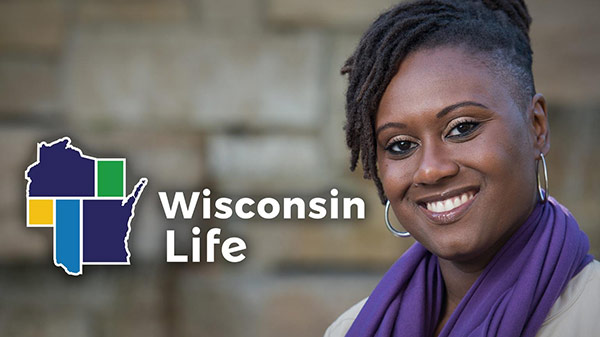
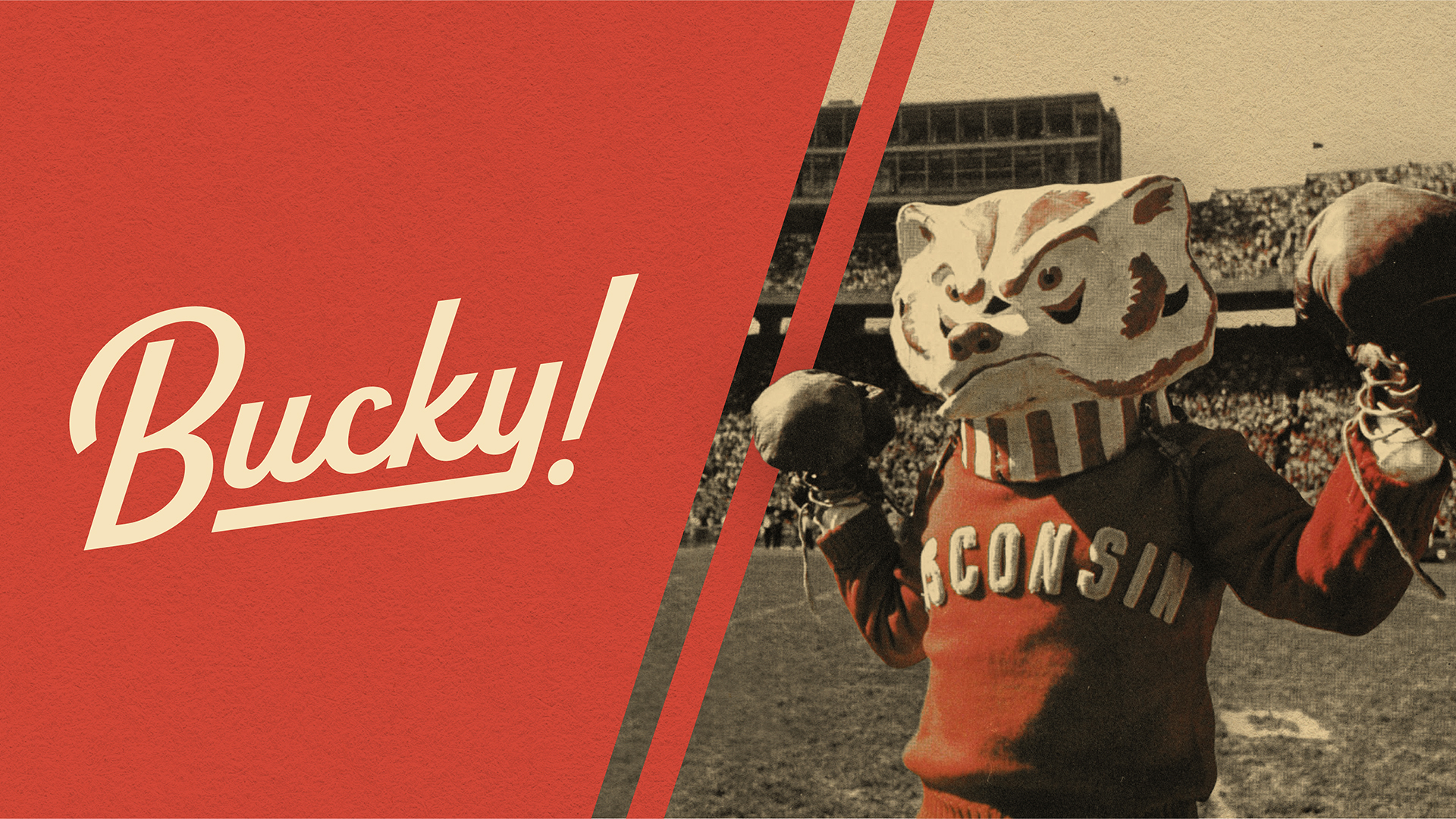
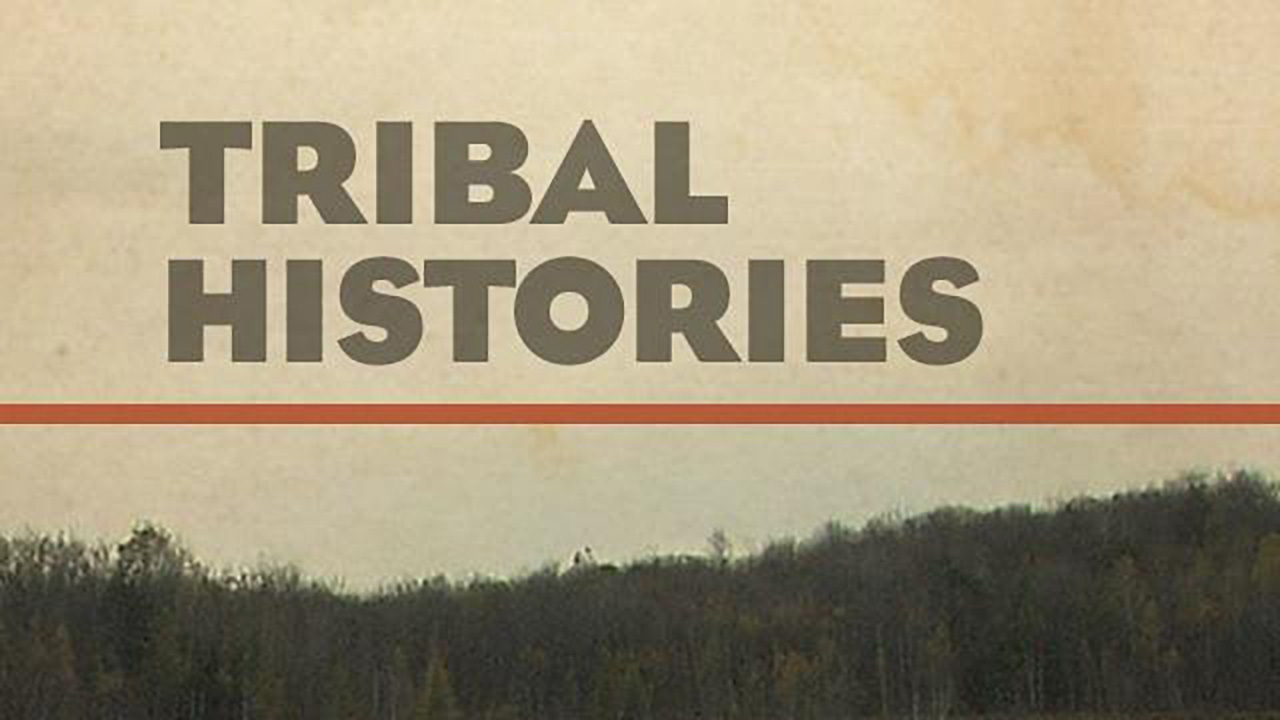
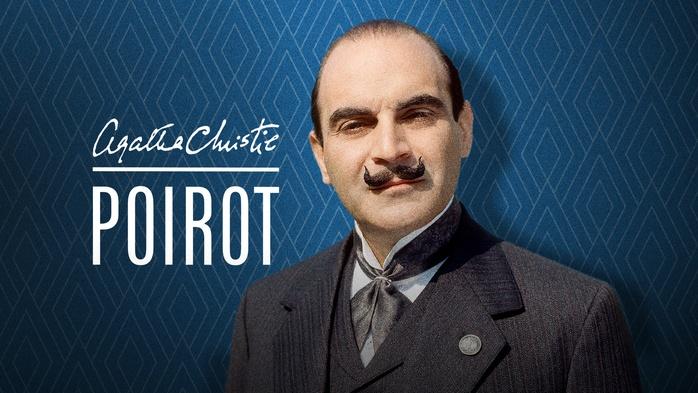




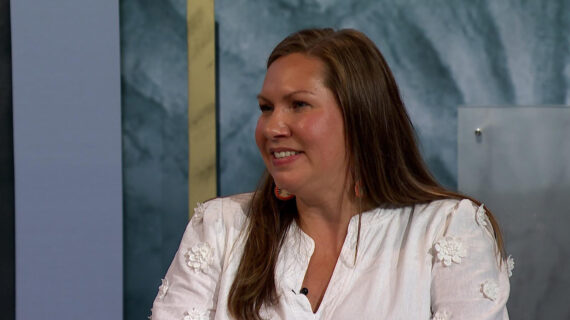
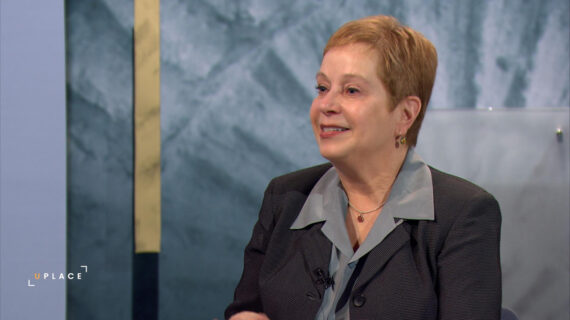

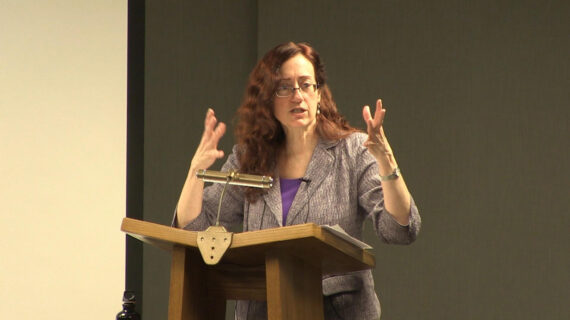

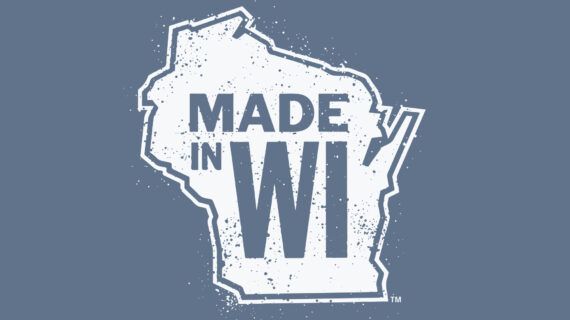

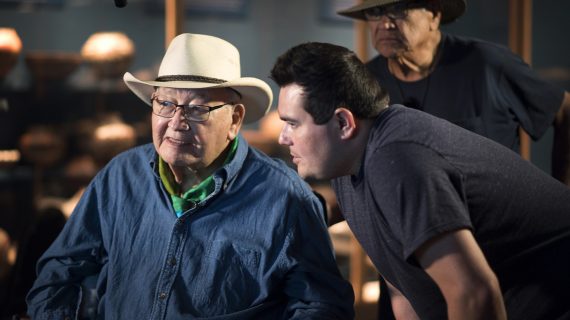


Follow Us